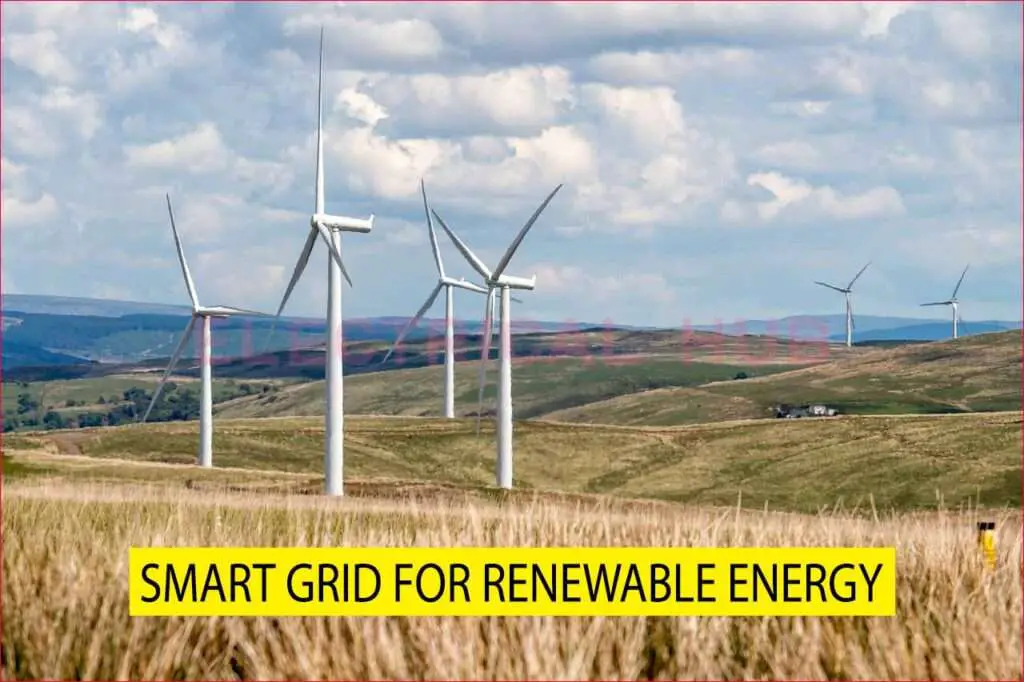Smart Grid for Renewable Energy: Important Concepts to Know
The integration of renewable energy into the power grid is crucial for achieving a sustainable and efficient energy future. However, traditional electrical grids were not designed to handle the variability and decentralization of renewable sources like solar and wind. This is where the smart grid for renewable energy plays a pivotal role. A smart grid leverages advanced digital communication, automation, and real-time monitoring to optimize power generation, distribution, and consumption.

Table of Contents
Table of Contents
What is a Smart Grid for Renewable Energy?
A smart grid for renewable energy is an intelligent power system that enhances the efficiency, reliability, and flexibility of electricity networks by incorporating digital technologies. It enables better integration of renewable sources, demand-side management, and grid automation. Unlike conventional power grids, smart grids use two-way communication between consumers and utilities, allowing for real-time adjustments and efficient energy management.
To better understand how a smart grid works, check out this detailed explanation on what’s a smart grid.
Need for Smart Grid in Renewable Energy Integration
Renewable energy sources like wind and solar are inherently intermittent, meaning their power generation depends on weather conditions. A smart grid solves several challenges associated with renewables, including:
Grid Stability: Advanced sensors and automation help balance supply and demand, reducing fluctuations in power supply.
Decentralized Power Generation: Unlike traditional grids, smart grids can manage multiple small power producers, such as rooftop solar panels and wind farms.
Energy Storage Management: Smart grids optimize battery storage, allowing excess energy from renewables to be stored and used when needed.
Real-Time Monitoring: Smart meters and sensors provide instant data to adjust energy flow dynamically.
Enhanced Demand Response: Consumers can modify their power usage based on real-time pricing and availability of renewable energy.
For a deeper dive into why we need such an advanced system, check out the article on need of smart grid.
Key Components of a Smart Grid for Renewable Energy
A smart grid is made up of several crucial components that enable seamless integration of renewable energy sources.
1. Smart Meters
Smart meters record electricity consumption in real-time and send data to both utilities and consumers. This allows users to adjust their usage based on energy availability, encouraging efficient consumption.
2. Advanced Distribution Management Systems (ADMS)
ADMS utilizes data analytics and automation to optimize energy distribution, reduce losses, and manage fluctuations caused by renewable sources.
3. Energy Storage Systems
Battery energy storage plays a crucial role in mitigating the variability of renewable energy. Smart grids coordinate energy storage to ensure a stable power supply even when solar or wind generation is low.
4. Microgrids and Distributed Energy Resources (DERs)
Microgrids are localized energy networks that can operate independently or connect to the main grid. DERs, such as rooftop solar panels and small wind turbines, are integrated into the smart grid for enhanced energy resilience.
5. Demand Response Systems
Smart grids enable demand-side management by adjusting consumer energy usage based on grid conditions, pricing, and availability of renewable energy.
To understand the fundamental concepts of smart grids, visit Smart Grid Fundamentals.
How Smart Grids Enhance Renewable Energy Efficiency
1. Optimizing Renewable Energy Generation
Smart grids utilize machine learning and AI-driven forecasting to predict solar and wind energy availability. This ensures efficient scheduling of power generation and distribution.
2. Real-Time Power Flow Control
With sensors and digital communication, smart grids detect fluctuations and reroute power as needed, preventing overloads and blackouts.
3. Integration of Vehicle-to-Grid (V2G) Technology
Electric vehicles (EVs) can function as energy storage units. Smart grids allow EVs to supply power back to the grid during peak demand periods.
4. Improving Energy Efficiency in Homes and Industries
Home automation systems, smart appliances, and industrial IoT devices work with the smart grid to reduce energy wastage and maximize renewable energy usage.
To explore more about the technical operations of a smart grid, check out Smart Grid Functions.
Challenges in Implementing Smart Grids for Renewable Energy
Despite their advantages, smart grids face several challenges:
- High Initial Investment: Upgrading infrastructure requires substantial financial resources.
- Cybersecurity Risks: Digitalization increases vulnerability to cyberattacks.
- Data Privacy Concerns: Smart meters collect detailed user data, raising privacy issues.
- Regulatory and Policy Barriers: Governments need to establish clear policies to support smart grid deployment.
Future of Smart Grid for Renewable Energy
The future of smart grids is promising with continuous advancements in AI, blockchain, and IoT. Some upcoming trends include:
- AI-Powered Grid Automation: Self-learning grids that optimize energy distribution without human intervention.
- Blockchain for Energy Transactions: Peer-to-peer energy trading will allow consumers to sell excess renewable energy securely.
- Widespread Adoption of Microgrids: More communities will adopt decentralized microgrids for greater energy independence.
If you’re interested in joining discussions and staying updated on smart grid innovations, check out these smart grid forums to join.
Conclusion
The smart grid for renewable energy is a game-changer in modern power systems, enabling efficient, reliable, and sustainable electricity distribution. By integrating advanced technologies, smart grids enhance renewable energy utilization, reduce power losses, and empower consumers with real-time data. While challenges remain, the future holds exciting possibilities for transforming energy infrastructure worldwide.
For more insights into how smart grids work, explore the detailed guide on what is smart grid.
Follow Us on Social:
Subscribe our Newsletter on Electrical Insights to get the latest updates in Electrical Engineering.
#SmartGrid, #RenewableEnergy, #EnergyEfficiency, #GridModernization, #CleanEnergy, #SmartGridTech, #SustainablePower, #GreenEnergy, #PowerGrid, #FutureEnergy, #EnergyStorage, #SmartEnergy, #GridInnovation, #SolarPower, #WindEnergy
